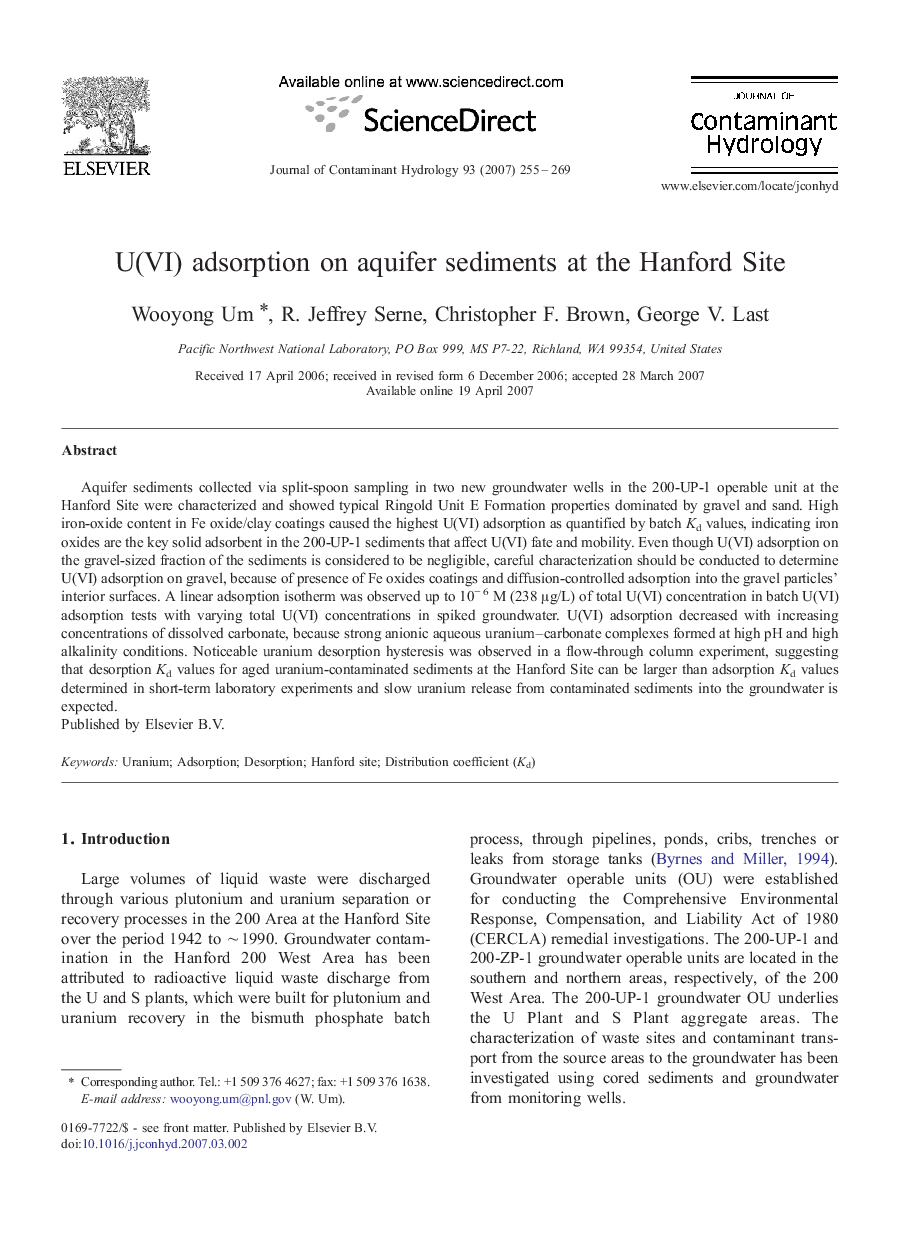| Article ID | Journal | Published Year | Pages | File Type |
|---|---|---|---|---|
| 4547455 | Journal of Contaminant Hydrology | 2007 | 15 Pages |
Abstract
Aquifer sediments collected via split-spoon sampling in two new groundwater wells in the 200-UP-1 operable unit at the Hanford Site were characterized and showed typical Ringold Unit E Formation properties dominated by gravel and sand. High iron-oxide content in Fe oxide/clay coatings caused the highest U(VI) adsorption as quantified by batch Kd values, indicating iron oxides are the key solid adsorbent in the 200-UP-1 sediments that affect U(VI) fate and mobility. Even though U(VI) adsorption on the gravel-sized fraction of the sediments is considered to be negligible, careful characterization should be conducted to determine U(VI) adsorption on gravel, because of presence of Fe oxides coatings and diffusion-controlled adsorption into the gravel particles' interior surfaces. A linear adsorption isotherm was observed up to 10â 6 M (238 μg/L) of total U(VI) concentration in batch U(VI) adsorption tests with varying total U(VI) concentrations in spiked groundwater. U(VI) adsorption decreased with increasing concentrations of dissolved carbonate, because strong anionic aqueous uranium-carbonate complexes formed at high pH and high alkalinity conditions. Noticeable uranium desorption hysteresis was observed in a flow-through column experiment, suggesting that desorption Kd values for aged uranium-contaminated sediments at the Hanford Site can be larger than adsorption Kd values determined in short-term laboratory experiments and slow uranium release from contaminated sediments into the groundwater is expected.
Related Topics
Physical Sciences and Engineering
Earth and Planetary Sciences
Earth-Surface Processes
Authors
Wooyong Um, R. Jeffrey Serne, Christopher F. Brown, George V. Last,
